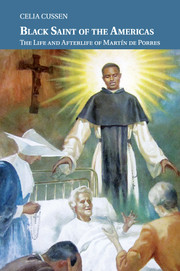Crossref Citations
This Book has been
cited by the following publications. This list is generated based on data provided by Crossref.
2015.
Books Received.
Journal of Latin American Studies,
Vol. 47,
Issue. 2,
p.
455.
2016.
Books Received.
The Journal of Ecclesiastical History,
Vol. 67,
Issue. 2,
p.
462.
CASTAÑEDA GARCÍA, Rafael
2016.
Modelos de santidad: devocionarios y hagiografías a San Benito de Palermo en Nueva España.
Studia Historica: Historia Moderna,
Vol. 38,
Issue. 1,
p.
39.
Sacco, Leonardo
2017.
Cultural Identity, Religion, and Globalization in Latin America: Our Lady of Guadalupe and Saint Martín de Porres as Clear Examples of Interculturalism and Instruments of Mediation Among Different Weltanschauungen.
International Journal of Latin American Religions,
Vol. 1,
Issue. 1,
p.
134.
Green, R. L.
2017.
The Politics of Prayer: White American Catholicism and “Negro” Sainthood.
Black Theology,
Vol. 15,
Issue. 3,
p.
245.
2017.
Liberalism as Utopia.
p.
244.
2017.
The Lords of Tetzcoco.
p.
197.
2018.
Embodying the Sacred.
p.
47.
2018.
Embodying the Sacred.
p.
143.
2018.
Embodying the Sacred.
p.
167.
2018.
Embodying the Sacred.
p.
71.
2018.
Embodying the Sacred.
p.
23.
2018.
Embodying the Sacred.
p.
95.
2018.
Embodying the Sacred.
p.
117.
2018.
Embodying the Sacred.
p.
1.
Millar Carvacho, René
2018.
Configuración y reconfiguración de una imagen de santidad. Hagiografías sobre el jesuita limeño Francisco del Castillo (s. XVII-XX).
Hispania Sacra,
Vol. 70,
Issue. 142,
p.
569.
2018.
Embodying the Sacred.
p.
175.
2018.
Embodying the Sacred.
p.
231.
Rowe, Erin Kathleen
2019.
Black Saints in Early Modern Global Catholicism.
2019.
Corruption and Justice in Colonial Mexico, 1650–1755.
p.
342.





